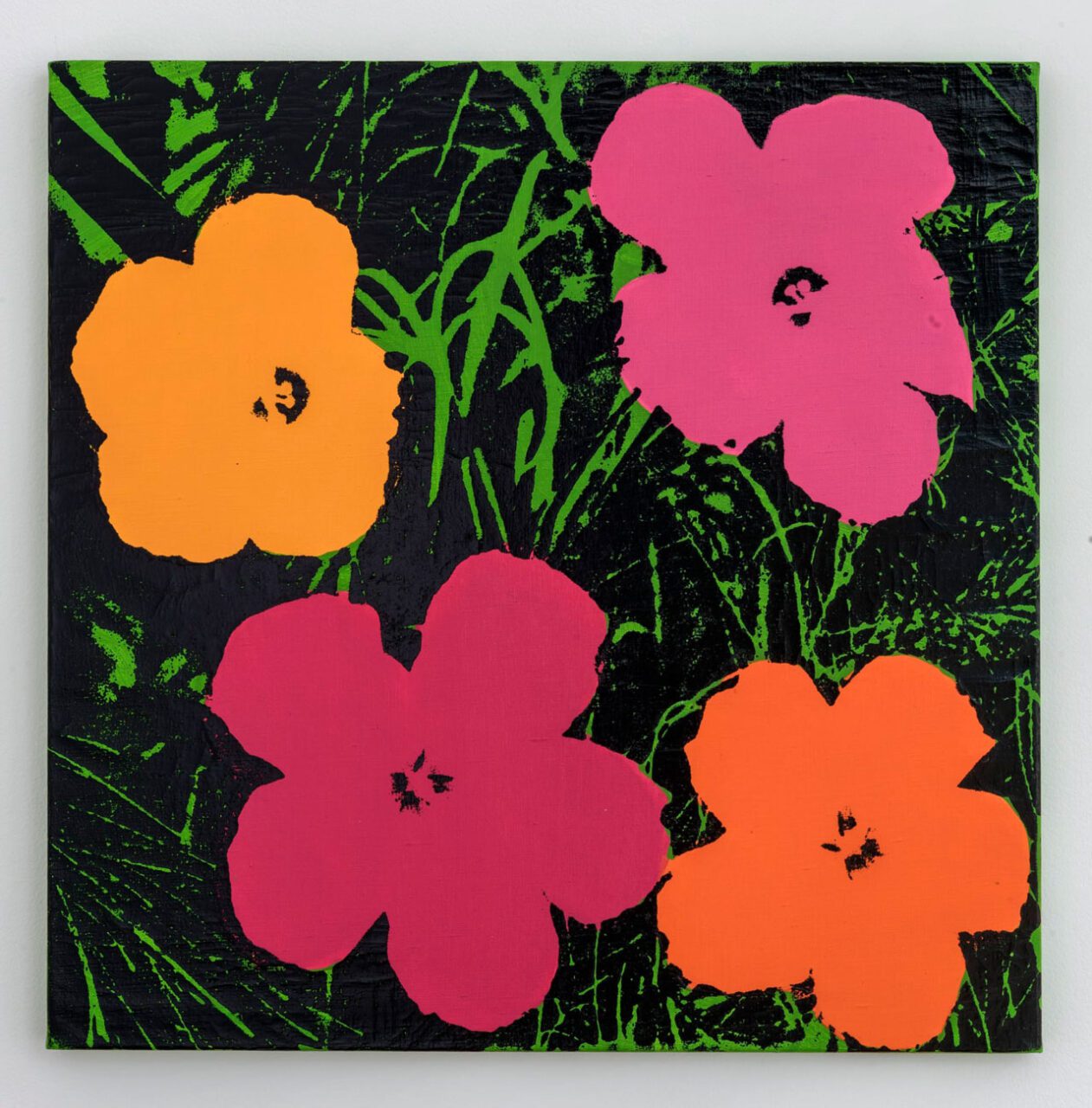ART CITIES: Paris-Sturtevant
 Sturtevant is best known for her repetitions of the works of other artists, which she recreated manually from memory after having seen a piece that intrigued her. These can immediately be identified with the original, but they are not copies. . Her aim was not to achieve an exact replica, but rather to address notions of authorship, authenticity and originality that would later come to the fore in our own digital age, characterised by the endless circulation and recombination of images.
Sturtevant is best known for her repetitions of the works of other artists, which she recreated manually from memory after having seen a piece that intrigued her. These can immediately be identified with the original, but they are not copies. . Her aim was not to achieve an exact replica, but rather to address notions of authorship, authenticity and originality that would later come to the fore in our own digital age, characterised by the endless circulation and recombination of images.
By Dimitris Lempesis
Photo: Thaddeus Roppac Gallery Archive
On the centenary of Sturtevant’s birth, this exhibition “ZIP ZAP !” celebrates the work of the pioneering American artist, spanning over five decades. The exhibition centres around Sturtevant’s 1995 repetition of Felix Gonzalez-Torres’s “Untitled (Go-Go Dancing Platform)” (1991), and retraces the evolution of her practice, from an early painting shown at her first exhibition in Europe in 1966, at Galerie J, Paris, to a significant video installation that manifests her later interest in the frenzy of fast-moving imagery that characterises our postmodern times. The exhibition is conceived in commemoration of an artist whose groundbreaking practice continues to confront us with an audacious and provocative rethinking of art, and as a celebration of art itself. Sturtevant’s repetitions, by memory, of artworks by her contemporaries are not copies, nor are they ‘a matter of distanced, allusive quotation’. Rather, as Musée d’Art Moderne, Paris curator Anne Dressen wrote on the occasion of Sturtevant’s major exhibition at the museum in 2010, they are “tools […] for getting away from the surface to provoke thought”. Through her process, Sturtevant created rigorous studies on the artworks she repeated: on their making, their canonisation, their valorisation. In this sense, her work is situated at the juncture where the visual gives way to the conceptual. As Sturtevant explained: “The push and shove of the work is the leap from image to concept. The dynamics of the work is that it throws out representation”. Sturtevant began to manually repeat works by other artists in 1964, initially engaging with American Pop artists such as Andy Warhol, Jasper Johns, Frank Stella and James Rosenquist. Works by all four of these artists, which would become iconic in their own right – Sturtevant had an exceptional instinct for selecting works that would later be recognised as masterpieces – are represented through repetitions in the exhibition. Among the early works on view is a 1966 repetition of Rosenquist’s Spaghetti and Grass (1965). The work was part of the artist’s very first, and now historic, exhibition in Europe, held in 1966 at Galerie J in Paris. Although some of her contemporaries were resistant to Sturtevant’s method, Andy Warhol, who himself played with notions of authorship and originality in his own work, embraced it, to the extent that when asked about his own technique, he is said to have quipped: “I don’t know. Ask Elaine [Sturtevant].’ Warhol even gave her one of his “Flowers” silkscreens so that she could repeat it. The resulting works have become some of Sturtevant’s best known. From the early 1980s onwards, Sturtevant increasingly turned her attention to the next generation of artists. Her 1995 repetition of Felix Gonzalez-Torres’s 1991 “Untitled (Go-Go Dancing Platform)” consists of a large platform edged with a garland of lightbulbs, which serves as a stage for a live go-go dancer. Sturtevant follows exactly the concept of Gonzalez-Torres’s original: the visitor encounters the dancer by chance, most frequently seeing the platform empty, its lights still lit. The performance itself, therefore, is less important than the fact that the work confronts the viewer with his absence. By restating the centrality of absence in Gonzalez-Torres’s work in her own repetition, Sturtevant reiterated the interest in absences, gaps, and difference that underscores her wider practice. Her approach resonates with the theories put forward by French philosopher Gilles Deleuze in his early masterwork “Difference and Repetition” (1968): that the inevitable imperfection of a repetition establishes difference, a distance that simultaneously separates it from and connects it to what it repeats. In repeating the works of other artists, Sturtevant creates difference, in the Deleuzian sense. Beginning in the 1990s, Sturtevant’s work shifted away from repetitions as such, instead engaging with ‘the zip zap of our digital world with its dangerous potent power’. Her video works interrogate and short-circuit the endlessly repeating imagery of post-internet life in a way that, today, seems more relevant than ever. In “Elastic Tango” (2010), nine stacked screens run clips of Sturtevant’s previous works alongside a miscellaneous jumble of fragments she recorded from the television: BBC nature documentary footage with cartoons; the ominous mushroom cloud of an explosion with commercials.
Photo: Sturtevant, Triptych Marilyn, 2004, Synthetic polymer silkscreen and acrylic on canvas, 49 x 124.5 cm, © Sturtevant Estate, Courtesy Thaddeus Roppac Gallery
Info: Thaddeus Roppac Gallery, 7 Rue Debelleyme. Paris, France, Duration: 12/10-21/12/2024, Days & Hours: Tue-Sat 11:00-19:00, https://ropac.net/

Right: Sturtevant, Gonzalez-Torres, Untitled (America), 2004, Installation view, Sturtevant: I Am Never The Other, The Power Station, Dallas, 2018, © Sturtevant Estate, Courtesy Thaddeus Roppac Gallery





Right: Sturtevant, Johns Flag, 1993 Lichtenstein Hot Dog, Magnifying Glass / Oldenburg Charms, Hamburger, 1965, Graphite pencil and felt pen on paper, 55.5 x 35.2 cm, © Sturtevant Estate, Courtesy Thaddeus Roppac Gallery
